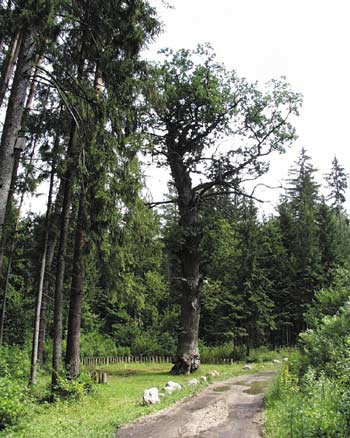Danish - Lithuanian Environmental Co-operation 1991-2000
Chapter 4
The DANCEE programme and its administration
The current country programme, which is effective until 2004, gives priority to the water sector, the waste sector and nature resource management. It also gives priority to projects of the "Ignalina Package,, which is a joint effort between the DANCEE programme and the Energy Sector Programme to support projects targeted at the needed restructuring of the energy sector in the light of the closing of the Ignalina Nuclear Power Plant. Furthermore, the country programme gives priority to projects, which will support the Lithuanian efforts to comply with EU legislation.
In the administration of the DANCEEprogramme, the DEPA applies two models, namely the application model and the tender model. Priority target areas are stated in a specific country programme, which is agreed between the DEPA and the Lithuanian Ministry of Environment, and prioritisation of projects in the pipeline of the DANCEE programme is agreed upon on biannual meeting between the DEPA and the Lithuanian Ministry of Environment
The application model is typically used by a partnership between the Danish applicant and a partner in the recipient country. The partnership identifies and describes the project according to DEPA's guidelines for application, the "Project Cycle Management Manual", the Ministry of the Environment and Energy, Denmark, 1999.
Typically, in the tender model, the DEPA and the Lithuanian Ministry of Environment identifies a specific high priority project and by the use of consultants prepares the project, which subsequently is tendered according to DEPA's procedures.
Basically, the project documents for the tender and the application model are the same.
From 1991 till 2001, there has been a tendency that the number of tendered projects per year has been rising on behalf of projects implemented by the application model. This development clearly reflects the growing capability of priority-setting in the Lithuanian Ministry of Environment - MoEL.
The every-day work
Prioritisation of projects in the pipeline of the DANCEE programme is, in principle, agreed upon on the biannual meeting between the DEPA and the Lithuanian Ministry of Environment.
The sector programme projects are mutually agreed between relevant sector authorities in Denmark and Lithuania, the Lithuanian Ministry of Environment and the DEPA.
Everyday work of the DANCEE programme is handled by a DEPA-appointed Country Programme Co-ordinator and other staff members of the DANCEE office. The work of the DANCEE office and the co-ordination with the Lithuanian Ministry of Environment is supported by a local project co-ordinator in the Lithuanian ministry.
The Local Project Co-ordinator (LPC) assists the Danish Environmental Protection Agency (DEPA) and the Lithuanian Ministry of Environment in the co-ordination of Danish environmental assistance, and the tasks of the LPC have been mutually agreed upon by the DEPA and the MoEL.
Until the summer 2001, an EU-advisor to the Lithuanian Ministry of Environment, funded by DANCEE funds, also acted as a facilitator for the DANCEE programme.
The different priorities
Priority target areas are stated in a specific country programme, which is agreed between the DEPA and the Lithuanian Ministry of Environment.
Furthermore, the country programme gives priority to projects that will support the Lithuanian efforts to comply with EU legislation.
The current country programme, which is effective until 2004, gives priority to projects of the "Ignalina Package", which is a joint effort between the DANCEE programme and the Energy Sector Programme to support projects targeted at the needed restructuring of the energy sector in the light of the closing of the Ignalina Nuclear Power Plant. Other prioritised areas are the water sector, the waste sector and nature resource management.
Components of public participation and institutional capacity building are seen as important parts of the prioritises projects.
The following part of the book presents a selection of projects executed during the period from 1991 till 2001. The selection illustrates the great variety of supported projects in relation to sector, subject, size, as well as duration.
